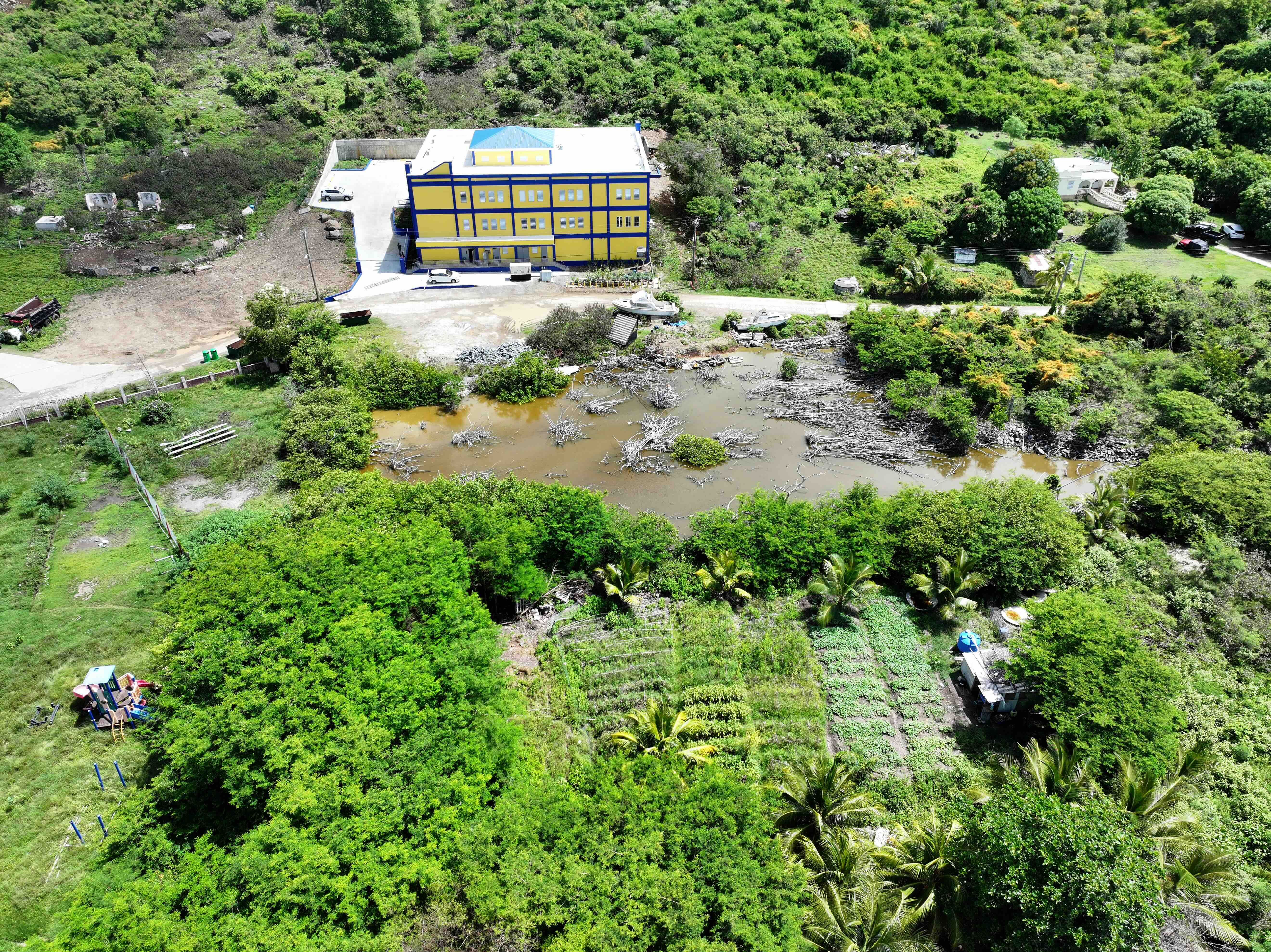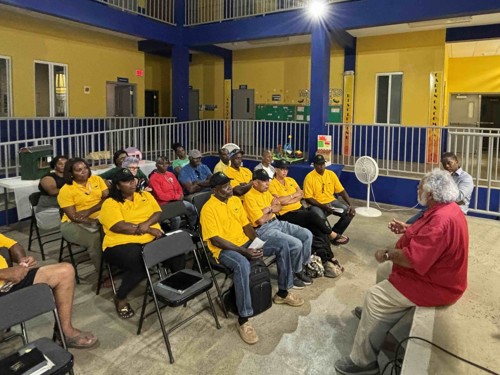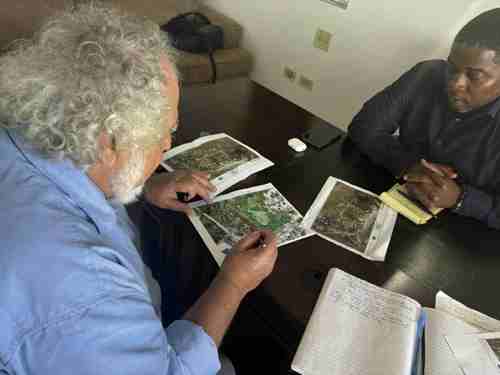Flood control in the British Virgin Islands

Aerial view of school and pond. Credit - Akeema Crabbe.
Wetland restoration and flood control in the British Virgin Islands
In 2023, the Recovery and Development Agency (RDA) was nearing completion of the construction of a new primary school on Jost Van Dyke, a small island in the British Virgin Islands. The new school was adjacent to a mangrove wetland that had been degraded in recent years.
As is often the case on small tropical islands, the wetland was in a low-lying area near the shore and subject to degradation from sediment runoff from uplands, nutrient enrichment from septic tanks and pollution from discarded debris. The damage to the wetland compromised the hydrology and drainage patterns resulting in flooding of nearby residences. The remaining wetland, barely three acres in area, still contains the Red mangroves (Rhizophora mangle) shoreline and attracts birds such as Moorhen (Gallinula species), White-cheeked pintail (Anas bahamensis), and several species of shorebirds.
A brief ecological survey suggested restoration could provide positive benefits to biodiversity, education, tourism, and a range of ecosystem services. Conversations with local residents and individuals from the Ministry of the Environment, Natural Resources, and Climate Change generated interest in exploring the potential to restore the wetland and help alleviate local flooding. Toward that goal, Darwin Plus support was applied for to fund a feasibility assessment for habitat restoration and flood control.
Once funding was approved, the Community Liaison Officer at RDA initiated meetings with the District Representative and members of the public, in particular with those with businesses or residences adjacent to the wetlands. The information gathered was used to guide the feasibility assessment undertaken by a hydrologist engineer and a wetland ecologist. The analysis produced by the consultants was used to formulate plans and designs to restore the wetland and develop ideas to reduce flood damage to residences near the wetland.


Wetland restoration requires engineering and construction that can be costly. The restoration was divided into several units that could be funded and implemented as standalone projects. Examples include debris removal and recontouring of the pond, elimination of invasive plants, replanting mangroves along the shore, reintroduction of wildlife (i.e. West Indian whistling duck), creating a water quality testing lab in the school, constructing an education centre and viewing platform for students and visitors, and organising wetland workshops targeted to teachers and those working in the construction industry.
By subdividing the restoration, it may be easier to secure funding from a variety of sources. While some funding was obtained from Darwin Plus, the local Climate Change Trust Fund, and public sources, efforts are underway to seek support from other charitable foundations, private businesses, and community minded individuals. An idea is being explored to develop long-term sustainable financing by creating a tourism business offering guided natural history tours to visitors.
At the present time, the support of the local government and nearby residents is encouraging. Once the first phases are initiated, we hope to see interest and publicity lead to success that will benefit wildlife biodiversity, education, and tourism.
Written by Clive Petrovic. For more information on this Darwin Plus Local project DPL00108, led by Recovery and Development Agency, please click here.

 Back
Back